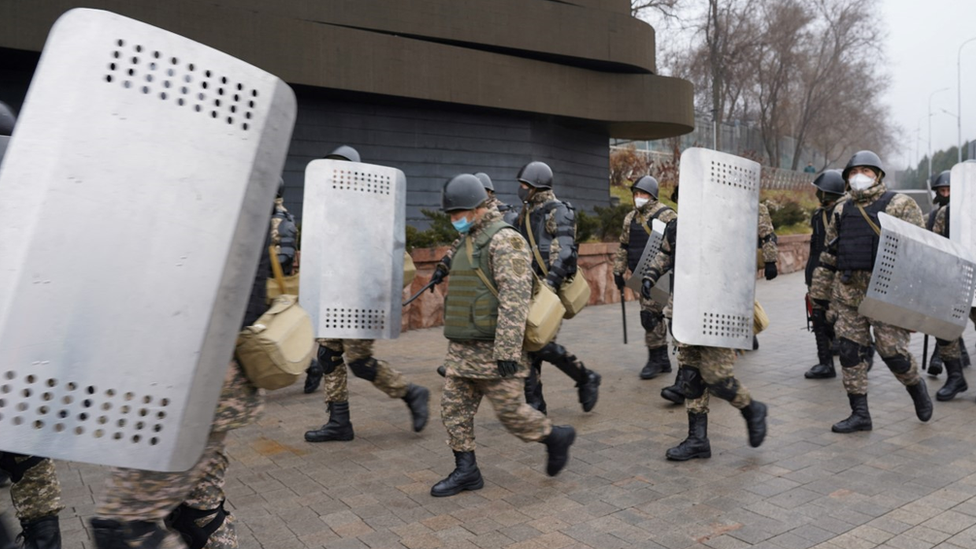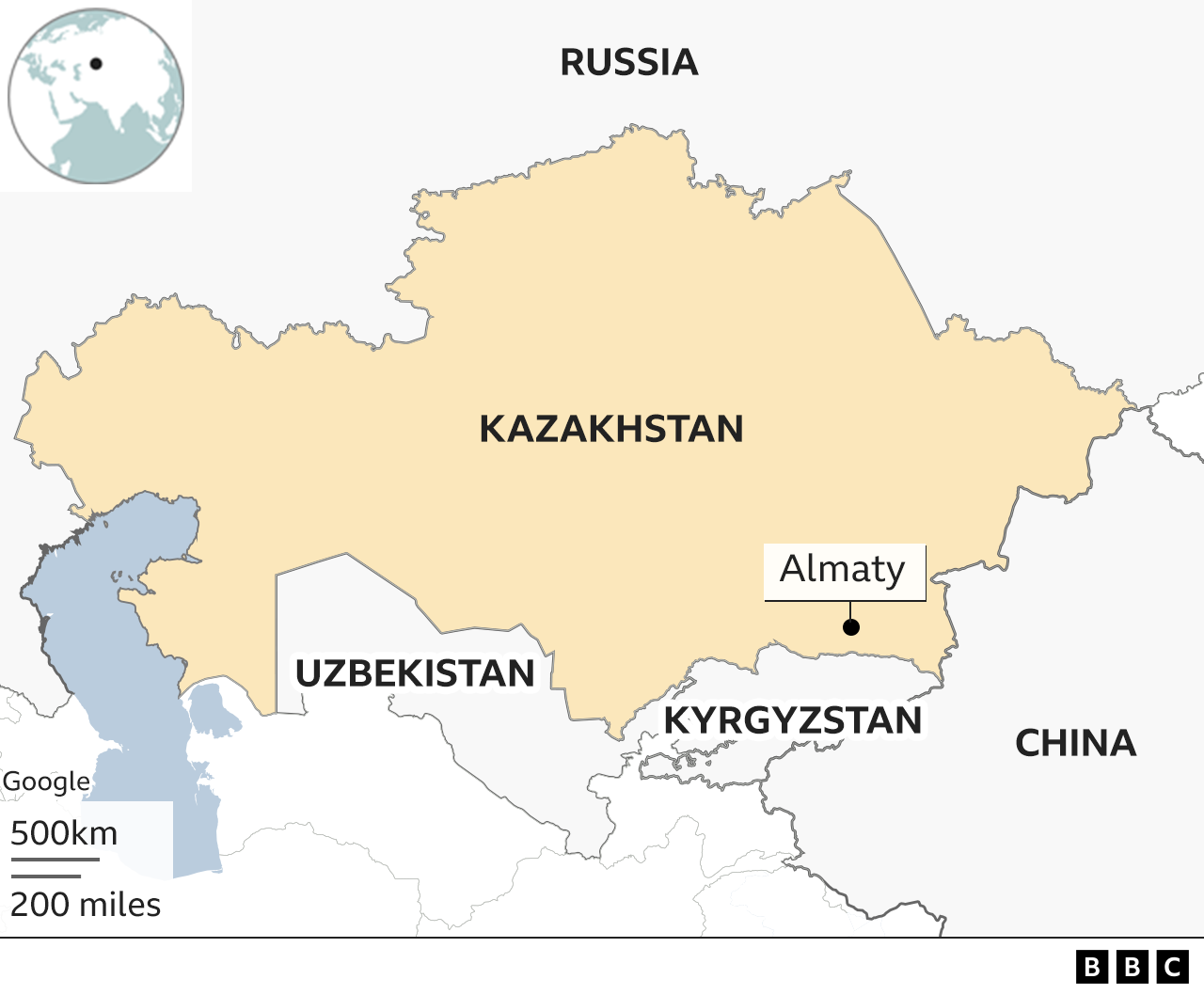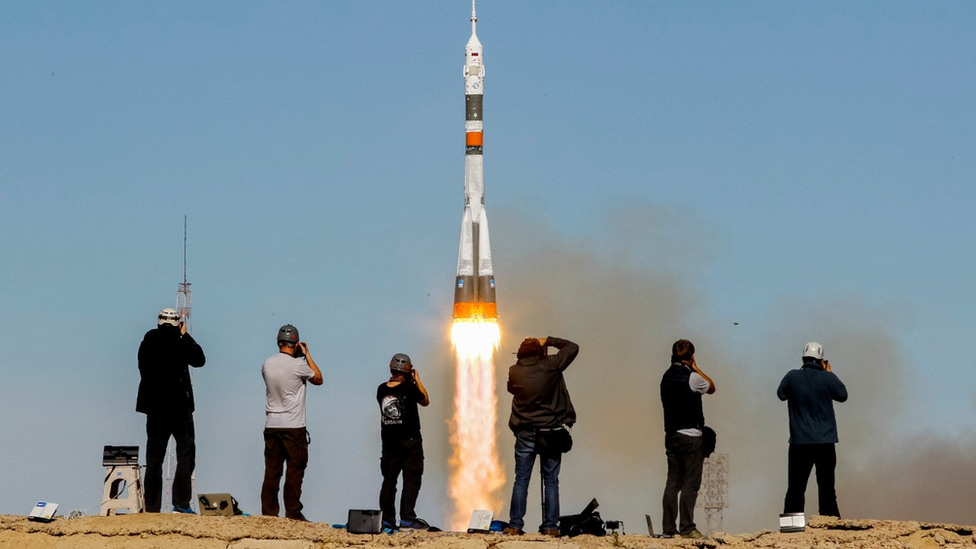Kazakhstan: Why are there riots and why are Russian troops there?
- Published

Security forces in the Central Asian country of Kazakhstan say they have killed rioters while trying to restore order.
Meanwhile, troops from neighbouring countries, including Russia, have been sent to help "stabilise" the situation.
Where is Kazakhstan and what kind of country is it?
Kazakhstan is a huge country, the size of Western Europe, situated in Central Asia and bordering Russia and China.
Made up mostly of mountains and arid steppe land, it has a population of only 19 million people.
It gained independence in 1991, following the collapse of the Soviet Union.

The country has some of the largest oil reserves in the world. It produces 1.6 million barrels a day and has attracted billions of dollars in foreign investment.
However, the wealth has not trickled down to the population, who have an average income of less than £2,500 a year.
For nearly three decades following independence, the country was run by Nursultan Nazarbayev - a former Communist Party politburo member with strong links to Russian President Vladimir Putin.
President Nazarbayev focused on economic reform while resisting moves to introduce more democracy.
Public protests in Kazakhstan are illegal without a government permit, and previous strikes and demonstrations were dealt with very harshly.
The president erected statues of himself and built a new capital, Astana, which was later renamed Nur-Sultan in his honour.
Mr Nazarbayev stood down in 2019, making way for the current president, Kassym-Jomart Tokayev.
What has happened in Kazakhstan?
Demonstrations started on 2 January in the town of Zhanaozen, an oil hub and the site of deadly clashes between protesters and police just over 10 years ago.
Protests then spread across the rest of the country.
The information ministry says that 44 deaths have been confirmed (it earlier put the number at 164 but then claimed this was a "technical mistake").
The security forces say rioters were killed in Almaty during clashes. Police say protesters tried to take control of police stations and government buildings in the city.
President Tokayev said "20,000 bandits" had attacked the city. He said many were Islamic militants who had been trained abroad, although he did not name any specific groups.
Nationwide, about 1,000 people have reportedly been injured, with 400 being treated in hospital.
More than 8,000 people have been detained, according to the Kazakh government. Curfews have been declared and mass gatherings banned.
Why did the riots start?
The protests began when the government lifted its price cap on liquefied petroleum gas (LPG).
Many Kazakhs converted their cars to use LPG because it was cheaper than other fuel.
However, the government said the price cap was leading to LPG shortages and it could no longer afford to boost supplies. Its decision to remove the cap virtually doubled the price.

A statue of former leader Nursultan Nazarbayev
The rioters also appear to have other grievances. Some chanted the name of Mr Nazarbayev and tried to tear down a bronze statue of him.
After stepping down as president, Mr Nazarbayev continued to hold a strong position in government as head of Kazakhstan's Security Council. He also appeared to be grooming his daughter Dariga as a future leader, according to observers., external
To placate the protesters, Mr Nazarbayev has been removed from his post, external.
Another former national security boss, Karim Masimov, has been arrested and charged with treason.
There seems to have been a power struggle taking place within during the time of the riots between President Tokayev and allies of his predecessor, according to Ben Godwin, head of analysis at Prism Political Risk Management.
How is Russia getting involved?
Russian paratroopers have been sent to Kazakhstan at the request of its president to help "stabilise" the country.
They were sent under the authority of the Collective Security Treaty Organization (CSTO) - a group of countries comprising Russia, Kazakhstan, Belarus, Tajikistan, Kyrgyzstan and Armenia, which was set up after the collapse of the Soviet Union.
It's thought 2,500 soldiers have been deployed, from across the CSTO's member states but mostly from Russia.
The CSTO says the troops are a peacekeeping force which will protect state and military installations such as gas pipelines, Russian military bases and the Russian space station at Baikonur.

Russia is keen to protect its assets in Kazakhstan such as the Baikonur Cosmodrome
What happens next?
Kazakhstan's National Security Committee says the situation in Almaty has stabilised and that security forces have restored control.
As a concession, the government has delayed removing its price cap on LPG - ordering the prices of all vehicle fuel to be regulated for six months.
Ministers have also been sacked. President Tokayev said the government had failed to carry out "one of its main tasks - keeping inflation in check".
However, according to Godwin, protests may continue for longer in Zhanaozen, which has a history of anti-government strikes and demonstrations.